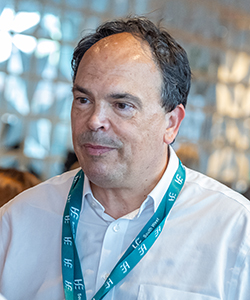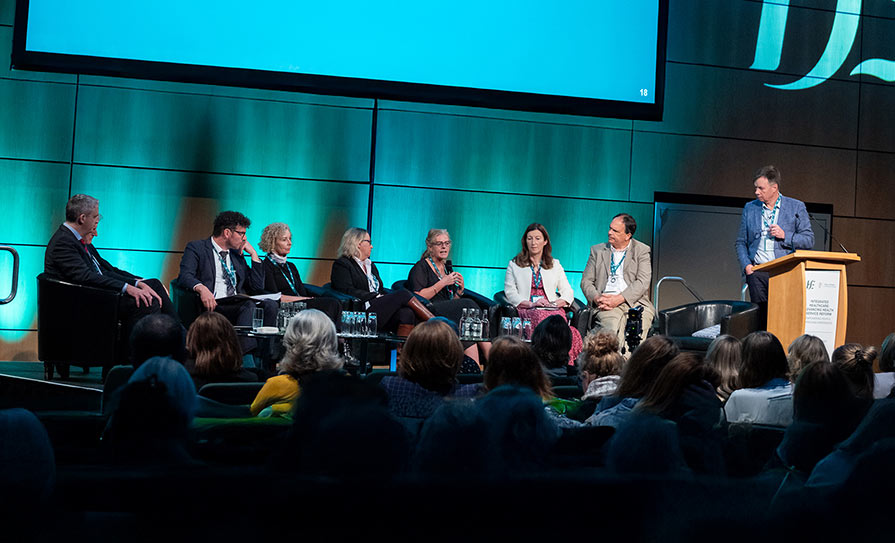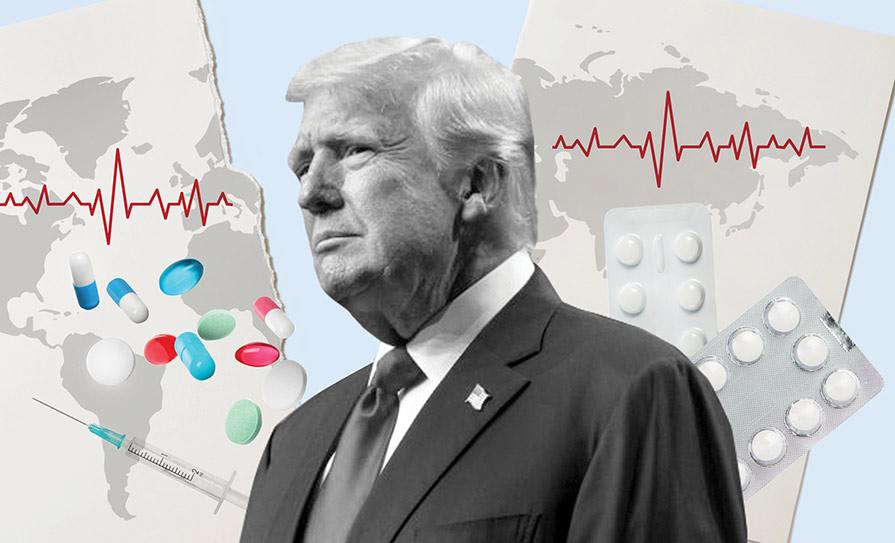A recent Dublin conference focused on the early impact of the six new health regions. David Lynch spoke to leading HSE figures at the event
There has been a broadly positive reaction to the new HSE regionalisation process from doctors and other healthcare professionals, a recent conference heard.
The ‘Integrated Healthcare: Advancing Health Service Reform’ conference took place in the Convention Centre, Dublin, on 5 September.
The meeting marked six months since the new health regions became operational and featured discussions on their roll-out. The six Regional Executive Officers (REOs) were in attendance.
The HSE is still a single organisation, but with six health regions. The HSE continues to be responsible for standards and guidelines. However, each region has its own budget, leadership team, and responsibility for local decision-making. “They continue to work towards the Sláintecare objectives,” according to the HSE.
In general, hospital doctors have “welcomed” the move to a more “regional approach”, Mr Tony Canavan, REO for HSE West and North-West, told the Medical Independent (MI).
Mr Canavan addressed the conference as part of a panel focusing on the restructuring process.
“In particular, I think that response has been around regional decision-making,” he said. “They [doctors] welcome the fact that what the regions promise would be that important decision-making that affects the way that they deliver care is back in the regions, rather than being taken at a national level.”
Mr Canavan said this is the most “overriding reaction” he hears from medical professionals.
Will GPs recognise any changes to their working lives?
“For sure,” said Mr Canavan. “We have appointed some regional GP leads into some of our clinical networks and that is a good start and it’s a help. Within the individual hospitals we also have GP liaison forums – that works reasonably well.”
If the health regions are to progress as envisaged, “we will need much better interaction between GPs and all the HSE services.”
Debate
During the design of the new regional structure, there was much debate regarding how much power would remain in the HSE ‘centre’ and how much would be regionalised.
“It is not just something that happens and then it is just done and dusted,” Mr Canavan told MI. “It is an ongoing interaction, an ongoing negotiation.”
However, he said he believed that “one of the really important decisions” in this regard was taken recently.
“That was around giving the autonomy back to the regions to decide what posts get replaced and what posts don’t get replaced. I think that is really important,” said Mr Canavan. But he noted there were other areas in which “we would like to get a greater degree of autonomy”.
In May last year, this newspaper reported that the HSE anticipated “industrial relations issues may arise” during the implementation phase. The matter was raised at a meeting of the Executive’s people and culture committee in January 2023 during a wider discussion on the regionalisation plan. However, to date, there has not been any significant industrial unrest.
“I would just say the unions are committed to an effective healthcare system and they work with us on that,” Mr Liam Woods, HSE National Director for the Health Regions Programme, told MI. Mr Woods said that the HSE is in regular contact with the National Joint Council regarding the regionalisation process. The Council involves staff representative bodies, including the IMO and IHCA.
He said the bodies, such as the IMO and IHCA, have been “broadly very supportive” of the process.
“My broad sense is that they [the medical representative bodies] are supportive while recognising the big challenges,” according to Mr Woods. He said that the cross-party political support for Sláintecare is reflected in the backing from the representative organisations for the establishment of the regional structures. The formation of the health regions is regarded as an important aspect of the Sláintecare reform agenda.
“Of course we are in ongoing dialogue with Fórsa and other unions around particular pathways of staff… those discussions are going well,” added Mr Woods. “We will have challenges; we know that…I would find our union colleagues are working well with us on it. We are not at loggerheads. We are discussing how to get towards what is a shared objective of a better [health] system.”
On the reaction of doctors, Mr Woods said he believed medical staff would be encouraged by seeing “community and acute services not running separately, but together” at a regional level.
“Bringing the clinical and the operational more closely together – that I think will be an advantage of this [reform].”
Mr Woods said people are “hopeful of the notion that the services are joining up under the regions… so the issues around ‘right care in the right place’ in the community, supported by hospitals, is more feasible”.
Regionalisation on its own would not make this happen, “but it will assist it,” he said.
Integrated healthcare areas (IHAs) will be the substructures within each of the six health regions. There will be 20 IHAs in total. They will serve a population of around 300,000 and take account of local geographies, population size, needs, and services. IHAs will bring together acute and community services as well as other non-HSE providers.
“This [the IHAs] will be crucial to supporting and enabling integrated care,” according to the HSE.
Dr Andy Phillips (PhD), REO for HSE South-West, told MI that doctors are often “largely dedicated” to their own hospital.

“I think this idea of regionalisation to many colleagues is a little new.”
He continued: “With regionalisation, things like rotas will change. We have great difficulty in sometimes organising rotas where there is a small number of colleagues in a specific hospital… but we can organise a rota over a region instead of a particular hospital… some of the modern technology helps us with that.”
Dr Phillips added it was his role to put enablers in place, rather than force change upon people.
“I think we are just starting to have those conversations. Our medical colleagues are very busy, with just getting on and doing the work and seeing the patients. I am trying to do a lot of communication with colleagues around what [regionalisation] means.”
He noted that doctors are so busy, “that this talk about reform… doesn’t really impact on their lives.” But he predicted this would change. “From 1 October we are going to have some of the integrated care managers in place, so some of the reporting relationships will change. We’ve appointed the regional clinical directors so some of those professional accountabilities will change.”
On GPs, Dr Phillips said “what we are trying to create is multidisciplinary teams in primary care”.
“Very often our GP colleagues do not have all the resources they need, the social workers, the physio… as we start to organise multidisciplinary teams I think that will change…. I think they have started to notice that they have greater support than they are used to [with the new regions].”
He stated that those working in primary care may notice that “some of the care pathways will change”.
“So what we really want is for GPs to be ably supported to work at the top of their practice… so GPs can use their time the way they decide.”
“It is about working with general practice…. I am very aware that general practice has maybe had less investment than many other professions… in particular, we have seen a very big increase in consultant numbers and we have not seen that echoed in general practice… but we are starting to train more GPs now.”













Leave a Reply
You must be logged in to post a comment.